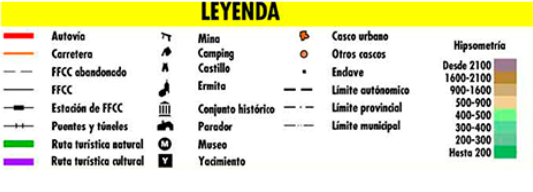
Winter

In the mountains the snow puts the survival skills of the animals to the test. However, you will have the luxury of being able to enjoy the clean, white landscapes and follow the tracks left in the snow by hares, foxes, deer and genets.
Hedgehogs, bats and garden dormice hibernate, snug in their winter nests, but whilst Mother Nature appears to be fast asleep, there is still a lot of activity. The fawns have now been weaned and have lost the attractive patterns that adorned their coats when they were younger, while the stags begin to shed their majestic antlers to immediately begin growing a new set. The wild boar, which tend to be nocturnal creatures throughout the rest of the year, often root for food during the day in the winter months.
Although it may not seem the most suitable moment, it is time for the squirrels to mate and raise their young, building comfortable dreys covered with lichen and moss in the crowns of the trees. Nor are the resident pairs of griffon vultures daunted by the cold: on sunny mornings you can enjoy the spectacle of their perfectly synchronised nuptial flights above the high cliffs. Subsequently, both parents will defend the solitary egg in their nest, protecting it from the wind and sleet that batter the rocky crags. Winter also marks the breeding season of the tawny owl and you only have to go a short way outside the towns, heading towards the forests, to hear their unmistakable calls filling the cold night air with an eerie magic. Bearded vultures are also hatching their chicks, still within the safety of the captive-breeding centre but soon to spread across the whole of Andalusia.
Towards the end of the winter there are already signs of the avalanche of life that is on its way: you can hear the halting mating call of the common blackbird from the trees and rooftops and admire the white flowers emerging from the almond trees.
Mountain Cuisine
Village Customs
Olive-picking
Hiking in the Snow
A different way of discovering the park's culture and customs is to become acquainted with the cuisine of the mountains and discover the specialities of each area. The region of Segura (home to the villages of Hornos, Segura de la Sierra, Puente Génave and Santiago de la Espada, amongst others) offers delicious dishes in the form of gachamiga (a distinctive, savoury porridge-like dish with a basis of flour, olive oil and salt), andrajos (a stew of rabbit or hare with tomato, onion, garlic and red pepper) and Segura lamb. Cazorla, La Iruela and Quesada are known for their exquisite rinrán (a hearty fish stew with vegetables), trout and game, while in Sierra de Las Villas you will find the flavoursome migas (breadcrumbs fried in garlic with chorizo sausage) and ajo morcilla (black pudding with garlic). It is also the time for livestock to go to the slaughter, a practice that is carried out in the traditional manner in many villages such as El Pelón and Rihornos in the municipality of Segura de la Sierra. Nearly all the towns and villages offer local sweet specialities, in addition to the well-known mistelle.
During the winter months some unusual events are held and interesting customs reveal themselves throughout the park. As in so many cultures, fire is closely linked to celebrations that take place on certain winter nights: The Night of San Antón, celebrated from the 16th to the 17th of January, bears witness to the lighting of bonfires in almost all the towns and villages in the park. Candlemas is celebrated in the village of Pozo Alcón, the Virgen de la Paz is honoured in Beas de Segura and the village of La Puerta de Segura celebrates the feast day of San Blas.
From December onwards the entire province of Jaen is dedicated to gathering in the olive harvest, and the park is no exception. Olive-growing in the mountains differs from cultivation in the lowlands: the nature of the geography of the highlands results in very little mechanisation within the harvesting process. The Organic Olive Cultivation Visitors' Centre in Génave provides an opportunity to learn about the importance of olive-growing within the local culture and visit one of the most successful olive mills in the province.
Hiking during the winter is ideal when weather conditions do not prove too severe. Snow is an additional obstacle to overcome on the trails and pathways across the park, but provides a beautiful spectacle that is not to be missed. There are a variety of accessible trails that are a pleasure to walk and offer breathtaking views of the mountains: we recommend the ascent of Navalperal, between Siles and Segura de la Sierra, and El Puntal de la Misa, also in Sierra de Segura. It is vital that you take the correct equipment with you, and don't forget your camera! However, if weather conditions are poor, don't go: snow, fog, wind and cold temperatures can ruin your hike and it is better to leave it for another day.



